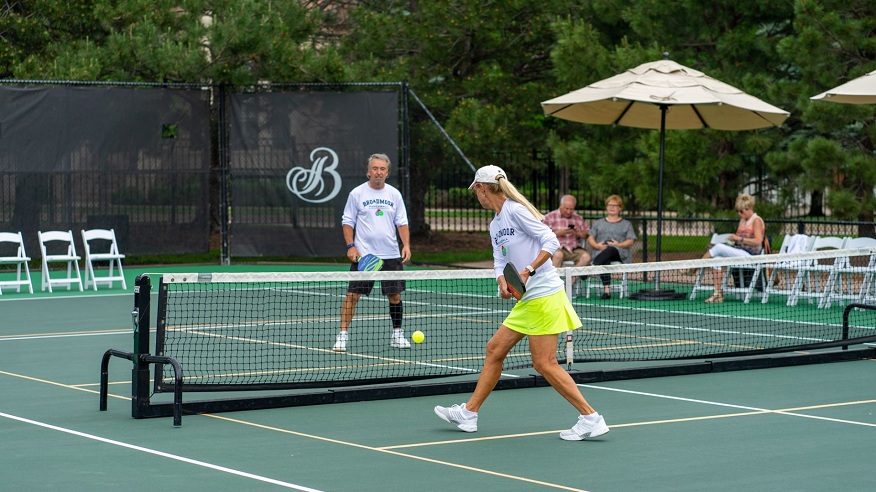
Pickleball has evolved significantly in the United States since its inception, and with its growing popularity, the sport’s governing body, the USA Pickleball Association (USAPA), has periodically amended the rules to ensure fair play and to accommodate the changing needs of players. In this comprehensive article, we will explore the United States Pickleball rule amendments, shedding light on the most significant changes and how they have influenced the sport.
The Evolution of Pickleball Rules
Pickleball originated in the mid-1960s and was initially played with a simple set of rules that were designed to make the game accessible and enjoyable for people of all ages. Over time, as the sport gained more players and enthusiasts, rule amendments became necessary to address issues, refine the gameplay, and accommodate competitive play. These rule changes are usually developed and regulated by the USAPA, which serves as the primary authority for pickleball rules in the United States.
Read More: Salwar Suit for Women: The Perfect Haldi Outfits
A Brief Overview of the Official Rules
Before diving into the amendments, let’s briefly review some of the fundamental pickleball rules that have remained consistent over the years:
Scoring System: In the US, pickleball games are typically played to 11 points, with a winning margin of at least two points.
Serving: Underhand serves are required, with the server standing behind the baseline. The serve must be diagonal to the opponent’s service court.
Double Bounce Rule: Each team must allow the ball to bounce once on each side before volleys are allowed.
Faults: Common faults include serving into the wrong service court, not clearing the non-volley zone during the serve, and stepping on or over the non-volley zone line while hitting the ball.
Non-Volley Zone: Also known as the “kitchen,” this area extends 7 feet from the net on each side and restricts volleying.
Now, let’s delve into some of the recent rule amendments and their impact on the game.
Rule Amendments and Their Impact
Non-Volley Zone Rule Adjustments
The non-volley zone has seen several amendments to provide greater clarity and fairness in the game. Previously, any part of the player’s body entering the non-volley zone while making contact with the ball was considered a fault. However, the rule was refined to state that only the player’s feet need to remain outside the non-volley zone during the act of volleying. This change has led to more precise and consistent calls by referees.
“Singles Stick” Rule
The “singles stick” rule is a recent addition to accommodate singles play. It allows players to use a physical barrier, often a removable stick, to divide the non-volley zone into two separate sections, allowing for more competitive and engaging singles matches. This amendment has expanded the possibilities for pickleball play and attracted more singles enthusiasts.
New Serves
Amendments to the serving rules have made the game more dynamic and strategic. The USAPA introduced the concept of the “non-volley zone foot fault” to address a common issue where players would accidentally step on or over the non-volley zone line during the serve. Now, if a player commits a foot fault during the serve, it results in a fault without affecting the outcome of the rally.
Let Serves
Let serves are serves that hit the net but still land in the correct diagonal service box. In the past, these serves were considered faults. However, rule amendments now permit let serves, making the game more forgiving and reducing service faults caused by net cords.
Time Limits
To maintain a reasonable pace in matches and tournaments, rule amendments have introduced time limits. These limits dictate the amount of time allocated for warm-up, timeouts, and changeovers between games. This amendment helps maintain the flow of the game and keeps players on schedule during competitive events.
Discretionary Calls
The USAPA has empowered referees with discretionary authority to address situations not covered by specific rules. This amendment provides referees with flexibility to make fair and just decisions during matches, ensuring that the spirit of the game is upheld.
Conclusion
Pickleball is a sport that continues to evolve, and the United States Pickleball Association has played a pivotal role in shaping the game through rule amendments. These amendments have aimed to maintain fairness, promote inclusivity, and enhance the overall experience for players.
As the sport’s popularity grows, it’s likely that we will see further rule amendments to adapt to the changing landscape of pickleball. Whether you’re a seasoned player or a newcomer to the sport, understanding these rule amendments is essential to staying current with the game’s regulations and enjoying a fair and competitive experience on the pickleball court. As the sport continues to thrive, so too will its rules, ensuring that pickleball remains accessible, enjoyable, and ever-evolving for generations to come.
